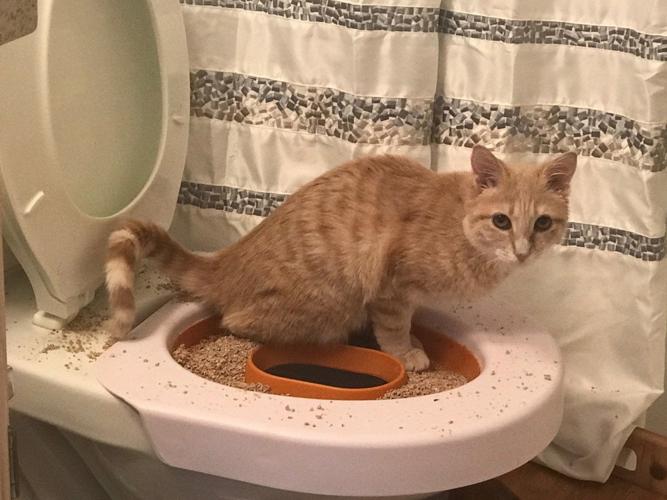Dangers of Flushing Cat Poop Down Your Toilet - Avoid Potential Issues
Visit PageHow do you really feel about How to Dispose of Cat Poop and Litter Without Plastic Bags?

Intro
As pet cat proprietors, it's essential to bear in mind exactly how we take care of our feline good friends' waste. While it might appear convenient to purge feline poop down the bathroom, this method can have damaging effects for both the environment and human health.
Alternatives to Flushing
The good news is, there are safer and much more liable ways to deal with pet cat poop. Think about the adhering to choices:
1. Scoop and Dispose in Trash
The most common method of dealing with pet cat poop is to scoop it into a naturally degradable bag and toss it in the garbage. Make certain to use a specialized clutter inside story and deal with the waste without delay.
2. Use Biodegradable Litter
Choose biodegradable feline clutter made from products such as corn or wheat. These trashes are environmentally friendly and can be securely taken care of in the garbage.
3. Bury in the Yard
If you have a lawn, take into consideration burying cat waste in a marked area far from veggie gardens and water sources. Make certain to dig deep enough to stop contamination of groundwater.
4. Set Up a Pet Waste Disposal System
Purchase a pet garbage disposal system specifically designed for pet cat waste. These systems utilize enzymes to break down the waste, minimizing smell and ecological influence.
Health Risks
Along with ecological problems, flushing feline waste can also posture wellness dangers to humans. Feline feces may contain Toxoplasma gondii, a parasite that can create toxoplasmosis-- a possibly extreme illness, especially for expecting women and people with weakened body immune systems.
Environmental Impact
Flushing cat poop presents dangerous microorganisms and parasites into the water supply, posturing a considerable risk to water ecological communities. These contaminants can adversely affect aquatic life and compromise water high quality.
Final thought
Liable pet ownership prolongs beyond supplying food and shelter-- it additionally entails proper waste administration. By avoiding flushing cat poop down the bathroom and opting for alternate disposal methods, we can minimize our ecological impact and secure human wellness.
Why Can’t I Flush Cat Poop?
It Spreads a Parasite
Cats are frequently infected with a parasite called toxoplasma gondii. The parasite causes an infection called toxoplasmosis. It is usually harmless to cats. The parasite only uses cat poop as a host for its eggs. Otherwise, the cat’s immune system usually keeps the infection at low enough levels to maintain its own health. But it does not stop the develop of eggs. These eggs are tiny and surprisingly tough. They may survive for a year before they begin to grow. But that’s the problem.
Our wastewater system is not designed to deal with toxoplasmosis eggs. Instead, most eggs will flush from your toilet into sewers and wastewater management plants. After the sewage is treated for many other harmful things in it, it is typically released into local rivers, lakes, or oceans. Here, the toxoplasmosis eggs can find new hosts, including starfish, crabs, otters, and many other wildlife. For many, this is a significant risk to their health. Toxoplasmosis can also end up infecting water sources that are important for agriculture, which means our deer, pigs, and sheep can get infected too.
Is There Risk to Humans?
There can be a risk to human life from flushing cat poop down the toilet. If you do so, the parasites from your cat’s poop can end up in shellfish, game animals, or livestock. If this meat is then served raw or undercooked, the people who eat it can get sick.
In fact, according to the CDC, 40 million people in the United States are infected with toxoplasma gondii. They get it from exposure to infected seafood, or from some kind of cat poop contamination, like drinking from a stream that is contaminated or touching anything that has come into contact with cat poop. That includes just cleaning a cat litter box.
Most people who get infected with these parasites will not develop any symptoms. However, for pregnant women or for those with compromised immune systems, the parasite can cause severe health problems.
How to Handle Cat Poop
The best way to handle cat poop is actually to clean the box more often. The eggs that the parasite sheds will not become active until one to five days after the cat poops. That means that if you clean daily, you’re much less likely to come into direct contact with infectious eggs.
That said, always dispose of cat poop in the garbage and not down the toilet. Wash your hands before and after you clean the litter box, and bring the bag of poop right outside to your garbage bins.
https://trenchlesssolutionsusa.com/why-cant-i-flush-cat-poop/

Do you enjoy more info about How to Dispose of Cat Poop and Litter Without Plastic Bags? Place feedback directly below. We'd be interested to see your suggestions about this review. In hopes to see you back again before long. Enjoyed our blog? Please share it. Help somebody else find it. Bless you for your time. Please come visit our site back soon.
Click Here